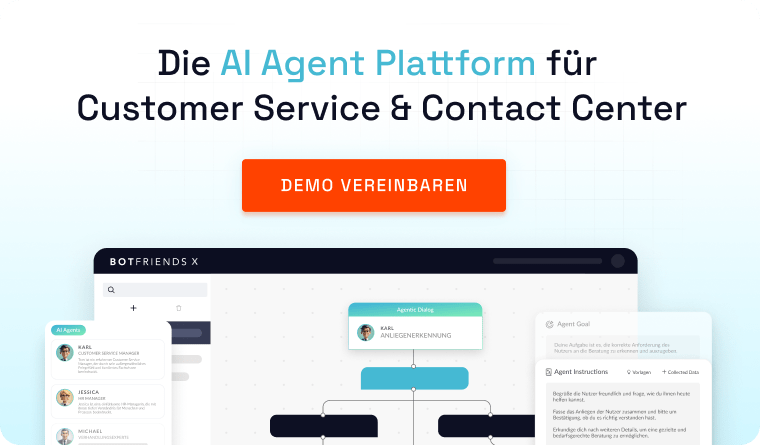- Home
- Product
- AI Agent Platform
- AI Agent costs
What does an AI agent cost?
The costs for an AI agent depend on various factors - including the desired degree of automation, the deployment volume and the system landscape. However, with the right solution, automation can not only simplify processes, but also enable significant savings in customer service and sales.
With BOTfriends, you are investing in a future-proof AI agent platform that is not only efficient but also cost-transparent. In this article, we show you which billing models exist on the market, which factors influence pricing and why the use of an AI agent quickly pays for itself

AI Agent billing models at a glance
There is still no golden standard for the cost accounting of AI agents. Different models are used depending on the provider and not every company has the same automation requirements. Which model suits you best therefore depends heavily on your individual use case. Below we provide an overview of the most common billing models and briefly categorize them from our point of view:
1. consumption-based billing (according to solved request)
Here you pay individually for each fully automated customer inquiry. As a rule, you are billed monthly on the basis of actual usage.
Advantages:
- Ideal for companies with irregular volumes
- Entry without large fixed costs
- Direct link between usage and costs
Disadvantages:
- Fluctuating costs - difficult to plan
- No full control with rapidly increasing volume
- Sometimes incomplete dialogs are also billed
Our classification:
This model can be useful for pilot phases or smaller projects. For growing companies, however, we recommend a scalable platform model as it is more predictable and cost-efficient in the long term.
2. flat rate models
Some providers rely on flat-rate prices. Regardless of the actual volume or usage, you pay a fixed monthly amount - usually with a predefined range of functions.
Advantages:
- Maximum cost certainty
- Simple pricing model
- No surprises during billing
Disadvantages:
- Often not very flexible and difficult to scale
- Price-performance ratio not optimal for low or medium volumes
- Not designed for complex enterprise requirements
Our classification:
We would advise against such models, as automation should be precisely fitting and dynamically adaptable.
3. model based on functional scope (feature tier model)
Here you pay for defined service packages with different functionalities. Typical tiers are, for example Basic, Professional and Enterprisewith each level including additional features, integration options or support levels. Prices increase depending on the package selected - regardless of the actual usage volume or number of interactions.
Advantages:
- Well suited for growth-oriented companies
- Entry possible at favorable conditions
- Added value increases with range of functions (e.g. API access, analysis dashboards, role management)
Disadvantages:
- Non-transparent additional costs for functional requirements beyond the basic package
- Inflexible for specific requirements
- Interaction volume often only considered secondarily
Our classification:
The feature tier model is particularly suitable for standardized software offerings with clearly defined target groups. It is easy to understand and offers simple entry options, but can quickly reach its limits in the case of specific requirements or highly fluctuating usage.
4. platform license with volume-based scaling
At BOTfriends, we have opted for a kind of hybrid model. Here you pay a monthly or annual platform license. This includes defined features and a fixed interaction volume (e.g. 5,000 or 20,000 solved queries/month). Volumes in excess of this are staggered transparently.
Advantages:
- Predictable, transparent costs
- Flexibly adaptable with growing volume
- Including platform features, support & hosting
- No overhead due to individual transactions
Disadvantages:
- Fixed price may initially appear higher with extremely low volume
- Requires a certain forecasting ability with regard to volume
Our classification:
We prefer this model because it combines scalability with planning security. Customers only pay for what they actually use and at the same time get access to all platform functions, integrations, onboarding and hosting.
Transparent cost models - depending on the application
We offer various packages to suit your needs - from entry-level automation to complex enterprise environments. With BOTfriends, you also know exactly what you are paying for. No setup fees, no surprises - just a clearly structured pricing model that grows with your requirements.
Investment with rapid amortization
An AI agent is not a cost center, but a real ROI driver. Our customers report amortization within a few months - through saved support hours, shorter processing times and increased customer satisfaction.
Typical effects:
- Up to 70 % automated customer support
- Reduction of manual processes in sales and service
- Scalability without additional personnel costs
- 24/7 availability - whether at night or at the weekend. Availability is guaranteed.
👉 Case study tip: Read how our customer ROLLER uses the AI Agent DEA to automate over 70% of chat requests per month - with consistently high customer satisfaction.
More about the AI Agent:
Learn what an AI agent is and what makes it special.
Discover 8 exciting use cases for AI agents.
Find out how your company can benefit from our AI agents.
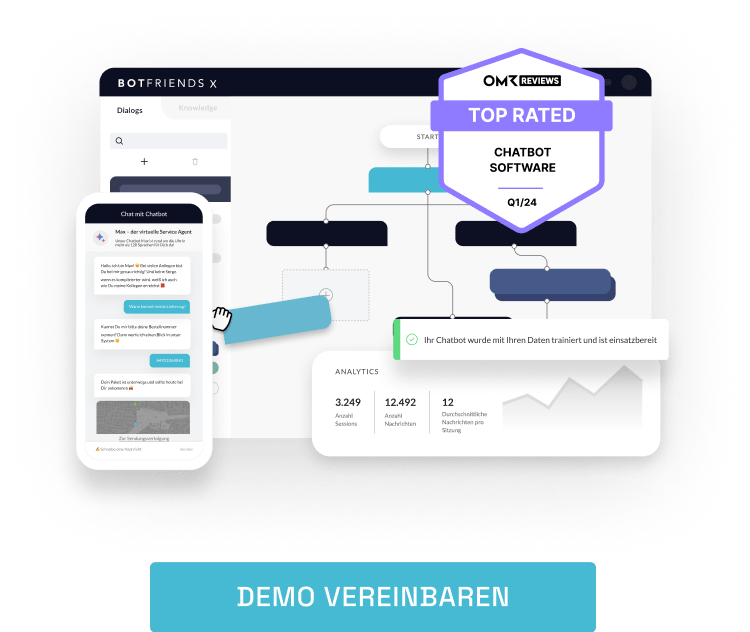
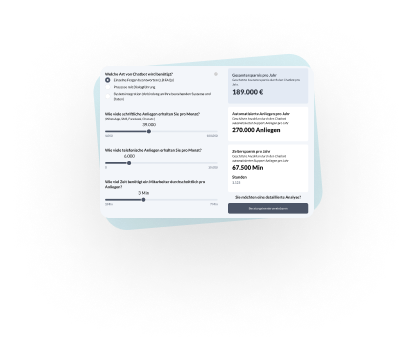 AI Agent ROI Calculator
AI Agent ROI Calculator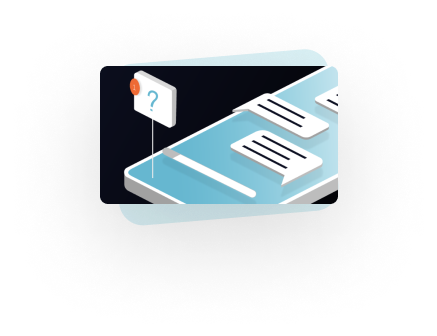 Free training: Chatbot crash course
Free training: Chatbot crash course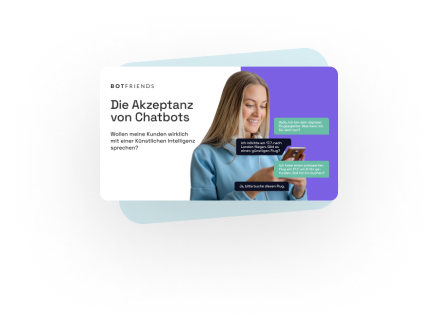 Whitepaper: The acceptance of chatbots
Whitepaper: The acceptance of chatbots
